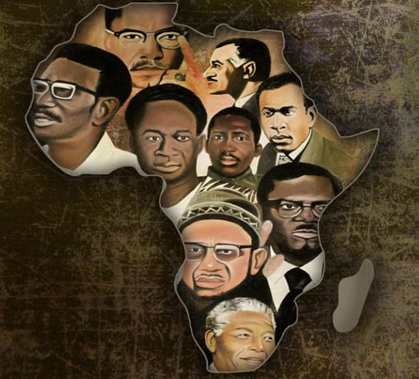Nowadays the global flows of culture tend to move easier around the globe through the new non-material digital forms. This phenomenon has been associated with many cultural consequences, which can be studied looking at three major theses, called: homogenization, polarization, and hybridization. The first one, the homogenization view, affirms that global culture is becoming standardized following the Western or American pattern. Anyhow, while there is some evidence that supports this theory, the disparities among different cultures and the resistance to Western norms suggests that polarization provides a more convincing picture of global cultural development. Indeed, the global interconnection and interdependence do not necessarily mean cultural conformity. Culture appears to be harder to standardize than economic organization and technology. The idea of polarization has its limits, too. The hybridization thesis argues that cultures borrow and incorporate elements from each other, creating hybrid, or syncretic, forms. Evidence to support this view comes mainly from popular music and religious life. The cultural consequences of globalization are therefore diverse and complex, and there is not a unidirectional way to explain them.
First of all, it is important to analyze the definition of the concept of culture. In the 19th century, the term culture was commonly used as a synonym for Western civilization. In 1871, the British anthropologist Sir Edward B. Tylor popularized the idea that all societies pass through three stages, the first one is “savagery,” after that they progress to “barbarism,” and ending in Western “civilization.” It is clear that this definition assumes the superiority of Western cultures. Instead, todays definition of culture is different. Indeed, it refers not only to the link that a distinct culture has with each country in the world, but it represents the thoughts of a community that is large enough to self-sustain. It is the totality of this group’s thoughts and the interaction of its elements, which Hofstede classified into four categories: symbols, rituals, values, and heroes, and how those elements evolve with contact with other cultures.

In recent years the theory has attracted increasing attention is the theory of polarization, which underlines and emphasizes the differences among and between cultures; it affirms that globalization has not a significant influence on cultures that are almost entirely closed to its process as well as closed from the impact of other crops, with the dangerous possibility of a collision among and between them. The explanation for an increase in the interest in this theory, it is due to two sets of events. The first one, is the terrorist attack on September 11 and the subsequent war in Afghanistan and Iraq, which are seen as the product of a clash between Western and Islamic culture and their eternal differences. The second one is the increasing multiculturalism of US and Western European countries and the vast differences and hostility between majority and minority population.
The most famous and controversial example of this theory is given by Samuel Huntington in his book called “The Clash of Civilizations.” Huntington with the use of the term civilization wants to describe the broadest level of culture and cultural identities, seeing the emergence of fault lines among and between these civilizations, which he differentiates in seven or eight world types, and so the creation of a dangerous situation due to the historic enmities among some of them. He sees human history as the history of these civilizations. He states that till the 1500 BC cultures tended to be widely separated in time and space with almost no interactions with each others. The next phase, lasting roughly from 1500 to the end of WW II, was characterized by the sustained impact of Western civilizations on all the other civilizations, which reached its highest point in 1910 when the world came closer to being one civilization, or rather Western civilization. The third phase, which started after WW II and lasted until 1990, was a multi-civilization system, seen as the end of the expansion of the West and the beginning of the revolt against it. It was a period characterized by a clash of ideas revolving around religion and culture. In fact, if the Western ideology were declining, there was the resurgence of the Asian societies and Islamic civilization. If the Asian communities, and in particular China, were the protagonists of a considerable economic growth, Islamic expansion was rooted in dramatic population growth and the mobilization of the population and caused the global revival of religion. Then Huntington analyzes the relation between the West and these other two civilizations, foresees serious clashes between these cultures, particularly between the West and the Islamic civilization, which he describes as inclined toward violent conflict. For this last controversial part, his theory received many critics because he promoted Islamophobia through his speech.
The second theory is cultural hybridization, which emphasizes the mixing of cultures as a result of globalization and produces new and unique hybrid cultures that are not reducible to either local or global culture. This theory exposes a very positive view of cultural globalization that is not linked with homogenization but with global heterogenization and the emerging of new cultural realities. A fundamental concept that expresses clearly this process is the one underlined by Robertson and called Glocalization. Glocalization can be seen as the interpenetration of the global and the local resulting in unique outcomes in different geographic areas. Indeed, the world is growing more pluralistic, individual and local groups have great power to adapt and innovate within a glocalized world. Another concept that is linked to the hybridization process is creolization, which is referred to the idea of a combination of languages and cultures that were previously unintelligible to one another. Therefore, hybridization is a term that underlines the diversity associated with the unique mixtures of the global and the local as opposed to the tendency toward uniformity often associated with globalization. A cultural hybrid involves the combination of two or more, elements from different cultures and parts of the world. An interesting example of hybridization, showed by Sarroub, is the participation in the US of Muslim girls in the American institution called the Girl Scouts. Muslim girls wear the scout garb to take part in that institution, reducing the tension in the interaction with non-Muslims and leading to The Girl Scouts to adopt some Muslim traditions. Another example of hybridization, is Salsa, a Latin American export, which has become a global dance craze. As Salsa has been shipped throughout the world, it has not come to be practiced in the same way in different geographic locales, as a matter of fact, there are important differences between the dance style of Salsa in the various countries. The idea of cultural hybridization, as Holton states, has been most successfully applied to a range of phenomena, such as music (including jazz and world music), contemporary art and literature, and religious and spiritual life. Anyway, opportunities for cultural exchange may open up not only through the micro-interactions of intermarriage but even where less auspicious forms of cultural contact bring those of different cultural backgrounds into contact with each other. Colonial occupation and imperial domination represent one example. In the classical world, the ancient Roman conquest of the Mediterranean Greek world resulted in Roman absorption of much of the Greek cultural legacy. The cultural impact of India on the British empire was less powerful, yet intercultural exchange in areas of religion, culture, and politics did occur, generating syncretic forms of cultural life. These include the Theosophy movement, which Easternized the spiritual life of many Westerners, or the integration of Western models of liberal democracy and self-government into Indian debates on national independence and cultural freedom.
While polarization is rooted in the idea of lasting differences among and between cultures, and hybridization emphasizes differences resulting from the interaction of the global and the local, homogenization is based on the notion that globalization tends to lead to an increased sameness throughout the world. The cultures of the world are seen as growing increasingly similar, at least to some degree and in some ways. Anyway, as Wherry affirms, these perspectives on cultural homogenization, do not argue that local cultures are disappearing entirely, or that they have all been altered in some fundamental way, in fact, even if globalization overwhelms local realities, those realities survive in some form or another. Homogenization is linked with the idea of a global economy, as Holton states, it is then equivalent to Westernization or even Americanization. The mechanisms of change, in this view, are associated with the worldwide spread of a market economy and the global strategies of multinational companies.

Linked with this idea of homogenization process id the McDonalization thesis, expressed by Ritzer, and it is based on Max Weber’s classic theory of rationalization of the West. The theory is defined as the process by which the principles of fast-food restaurants, such as efficiency, calculability, predictability, and control, are coming to dominate more and more sectors of American society, as well as the rest of the world. This picture of homogeneity, evident from the 1950s onward, has been further enhanced with the recent development of information technology and global communications. Nowadays, icons such as Microsoft, Motorola, Yahoo!, and Amazon.com have joined and surpassed the fast-food icons such as Coca-Cola and McDonald. Top-down fast-food and soft-drink marketing is rapidly being supplanted by a more interactive Internet culture, at least among the most affluent populations in the world. This indicates both that global consumer culture is itself changing very rapidly and that patterns of homogeneity, insofar as they exist, are far from static and secure. A distinctive theoretical approach to homogenization in general and cultural convergence, in particular, is drawn by Meyer and is called world culture. According to this theory, there has developed, especially in recent years, a series of global models in a variety of different domains and they have taken to a surprising amount of uniformity throughout the world. Also, there are more organizations involved in and active in educating and advising various populations about the models. The homogenization thesis, according to Holton, provided it is regarded in a dynamic way, has much to be said for it, but it is liable to a range of criticisms and limitations. First, the firm association of cultural globalization with Americanization is overstated. This is partly because other Western nations, such as the United Kingdom and France, retain a special cultural relationship with their former recent colonies, affecting patterns of migration, sport, food, and religious practice, as well as many public cultural assumptions built into law and politics.
In conclusion, there are no easy answers to questions relating to the cultural consequences of globalization. This is because of the failure of the most widespread theories to adequately explain the diversity and complexity of global cultural development. As Holton affirms, homogenization gives an interesting and important perspective, but it is far from being the dominant trend. The polarization thesis instead deals with the first level of complexity, that of countertrends, but at the expense of ruling out interculturalism and hybridization. The hybridization perspective is a corrective to the other two approaches because it can include a second level of complexity, the one of interaction. Cultural globalization does not have only a unilateral consequence, but is the ensemble of different outcomes and it is a process that can not be prevented. It can give positive results if people can integrate with other ideologies without losing their cultural identity. Anyway, the culture imposition by most industrialized countries, as happened in the Western culture after the Enlightenment, is never a great choice, and it will create social and political inequalities that can lead to ethnic and religious conflicts.







